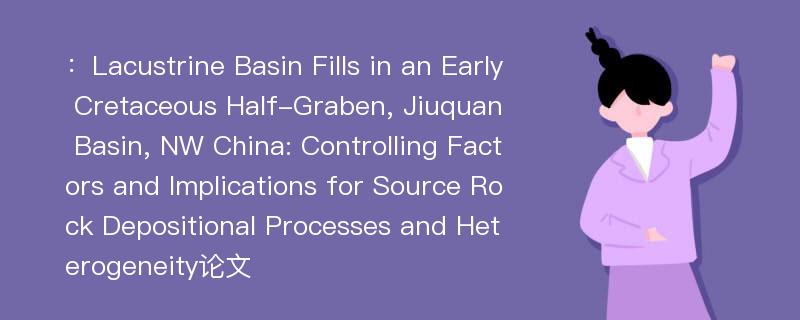
本文主要研究内容
作者(2019)在《Lacustrine Basin Fills in an Early Cretaceous Half-Graben, Jiuquan Basin, NW China: Controlling Factors and Implications for Source Rock Depositional Processes and Heterogeneity》一文中研究指出:Studies on basin fills have provided significant insights into reservoir distribution and prediction in petroliferous basins, however, the effect of basin fills on source rock properties has been underexplored. This paper documents basin filling characteristics and their implications for depositional processes and heterogeneity of source rock in the Qingnan subsag of the Jiuquan Basin, by using subsurface geological data from recent hydrocarbon exploration efforts in this area. Drill core data reveals that the basin fill of the Qingnan subsag was dominated by fan delta-lacustrine systems, in which deposition of the fan deltas along the basin margin was mainly through gravity flows. The temporal and spatial evolution of the depositional systems indicates that the basin fill was characterized by a continuously retrogradational process, with decreasing extent of fan deltas in vertical succession. Weakening of tectonic activities and climate change from humid to semi-arid are interpreted to be the main control factors that were responsible for the retrogradational basin fill. The different depositional environments in the early stage and late stage of the retrogradational basin filling history resulted in the different depositional processes and properties of source rocks. This study suggests that source rock heterogeneity associated with basin fills in lacustrine basins should be considered in hydrocarbon exploration.
Abstract
Studies on basin fills have provided significant insights into reservoir distribution and prediction in petroliferous basins, however, the effect of basin fills on source rock properties has been underexplored. This paper documents basin filling characteristics and their implications for depositional processes and heterogeneity of source rock in the Qingnan subsag of the Jiuquan Basin, by using subsurface geological data from recent hydrocarbon exploration efforts in this area. Drill core data reveals that the basin fill of the Qingnan subsag was dominated by fan delta-lacustrine systems, in which deposition of the fan deltas along the basin margin was mainly through gravity flows. The temporal and spatial evolution of the depositional systems indicates that the basin fill was characterized by a continuously retrogradational process, with decreasing extent of fan deltas in vertical succession. Weakening of tectonic activities and climate change from humid to semi-arid are interpreted to be the main control factors that were responsible for the retrogradational basin fill. The different depositional environments in the early stage and late stage of the retrogradational basin filling history resulted in the different depositional processes and properties of source rocks. This study suggests that source rock heterogeneity associated with basin fills in lacustrine basins should be considered in hydrocarbon exploration.
论文参考文献
论文详细介绍
论文作者分别是来自Journal of Earth Science的,发表于刊物Journal of Earth Science2019年01期论文,是一篇关于,Journal of Earth Science2019年01期论文的文章。本文可供学术参考使用,各位学者可以免费参考阅读下载,文章观点不代表本站观点,资料来自Journal of Earth Science2019年01期论文网站,若本站收录的文献无意侵犯了您的著作版权,请联系我们删除。
